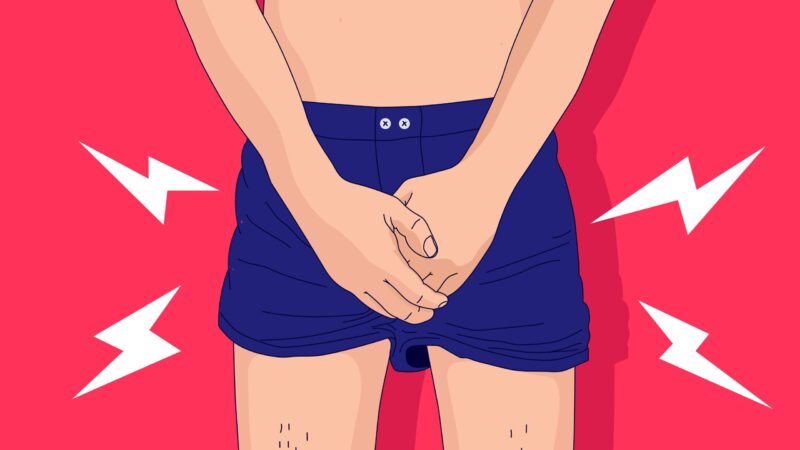
By James Hickling, Deputy System Medical Director, NHS Mid and South Essex
As a doctor, I’ve seen firsthand how delayed treatment of testicular torsion can lead to preventable surgeries and loss of testicles in young males. This condition requires immediate medical attention, but too often, embarrassment or lack of awareness leads to dangerous delays in seeking help.
Our local data shows that on average, more than one boy or young man loses a testicle each month in our area because they don’t get to the Emergency Department quickly enough. This is why I’m sharing this important health information with parents and young people.
If you (or your son) experience sudden, severe pain in the testicle area – don’t wait, don’t hesitate. Go straight to A&E or call 999. Quick action could prevent lifelong consequences.
What is testicular torsion?
Testicular torsion happens when a testicle rotates, twisting the spermatic cord that brings blood to the scrotum. This cuts off the blood supply to the testicle and surrounding tissue, causing sudden pain and swelling.
It most commonly affects those between 10 and 18 years old, but can happen at any age, including newborn babies.
Warning signs to look out for
Testicular torsion usually comes on suddenly and causes:
- Severe pain in one testicle that might start during physical activity, after an injury, or while sleeping
- Swelling of the scrotum
- Abdominal pain
- Nausea or vomiting
- A testicle that sits higher than normal or at an unusual angle
- Redness of the scrotum
Many young people might feel embarrassed about problems in this area, but it’s vital to tell someone straight away if you have these symptoms.

Testicular Torsion Infographic
The image shows an educational health infographic about testicular torsion, with two side-by-side anatomical illustrations of the testicles.
On the left side is an illustration labelled “Normal Anatomy” showing the healthy structure with three labelled parts: the spermic duct (at the top), the testis (in the middle), and the epididymis (at the bottom).
On the right side is an illustration labelled “Testicular Torsion” showing the affected condition, where the blood vessels and spermic duct have become twisted. This illustration includes white arrows indicating the twisting motion that occurs during torsion.
Why quick action is essential
Testicular torsion is a medical emergency. The longer the blood supply is cut off, the greater the risk of permanent damage:
- Within 6 hours: Good chance of saving the testicle
- After 12 hours: Risk of damage increases significantly
- After 24 hours: Testicle will likely need to be removed
Local data shows that more than one boy or young man loses a testicle each month in mid and south Essex because they don’t get to the Emergency Department quickly enough when they develop testicular torsion.
What to do if you suspect testicular torsion
Go to A&E immediately – don’t wait to see if it gets better. If possible please go straight to Broomfield or Southend Hospital A&E department. Basildon Hospital can do assessments, however they would need to transfer you to Broomfield Hospital if treatment was required, which could mean delays.
Don’t give pain relief before seeing a doctor, as this might mask symptoms.
Don’t apply heat – this won’t help and may waste valuable time.
Call 999 if you can’t get to A&E quickly.
For young people: Don’t be embarrassed – act fast
If you’re experiencing sudden, severe pain in your testicle:
- The faster you get help, the better chance of avoiding surgery
- This is nothing to be embarrassed about – it’s a medical emergency
- Tell a parent, teacher or another trusted adult immediately
- If you’re alone, call 999 or go straight to A&E (please see note in box above about which hospital to attend)
- Remember: doctors and nurses deal with these issues every day
For parents: creating a supportive environment
Young people might feel awkward talking about their testicles, but creating an environment where they feel comfortable discussing health concerns is important:
- Reassure them that medical professionals deal with these issues every day and won’t be embarrassed
- Let them know it’s normal and important to talk about all aspects of their health
- Explain that quick action with testicular torsion could save their testicle
Treatment
The main treatment for testicular torsion is surgery to untwist the testicle and restore blood flow. This procedure is called ‘orchidopexy’. If the testicle can’t be saved, it may need to be removed (orchidectomy).
During the operation, the surgeon will usually fix both testicles to the scrotum to prevent torsion happening again.
Recovery
After surgery, most young people can go home the same day or the following day. Full recovery typically takes 1-2 weeks. They should:
- Avoid strenuous activity and sport for about 2 weeks
- Take pain relief as recommended
- Keep the wound clean and dry
- Attend follow-up appointments
Preventing testicular torsion
Unfortunately, there’s no guaranteed way to prevent testicular torsion. However, knowing the symptoms and seeking immediate help are the best ways to protect long-term health.
Some young people are born with a higher risk because of the way their testicles are attached inside the scrotum.
Remember the simple rule: sudden, severe testicular pain means go to A&E right away.
Don’t delay seeking medical attention due to embarrassment or hoping the pain will go away. With testicular torsion, time is critical.